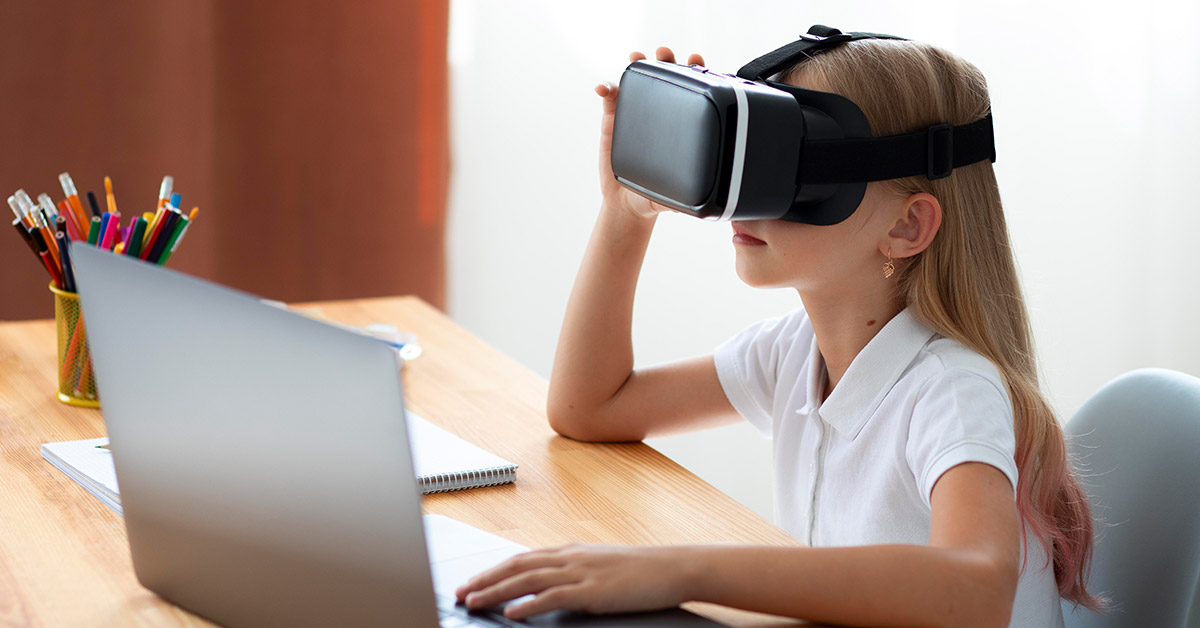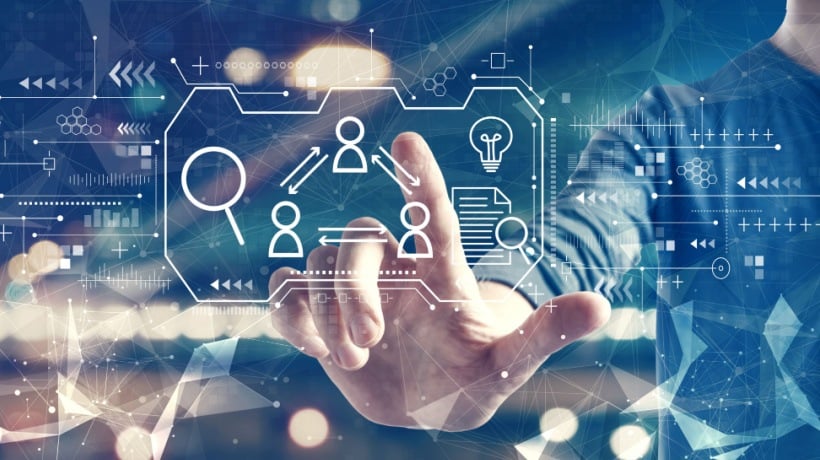Transform Your Job Path with Ingenious Education Programs and Programs
Transform Your Job Path with Ingenious Education Programs and Programs
Blog Article
Innovative Approaches for Enhancing Technology Education in Today's Understanding Atmospheres
The developing landscape of innovation education and learning necessitates a reevaluation of traditional instructional techniques to better equip students for the complexities of the contemporary world. Ingenious approaches, such as hands-on knowing experiences and collaborative project-based efforts, play a vital function in connecting academic principles with functional applications. In addition, the assimilation of online sources and gamification can improve interaction and inspiration among students. As we check out these methods, it comes to be necessary to take into consideration how tailored knowing can further improve the academic experience and promote a much deeper link between trainees and modern technology. What might this imply for the future of education?
Hands-On Knowing Experiences
Hands-on understanding experiences offer as a keystone in technology education and learning, properly connecting the gap between theoretical knowledge and functional application. These experiential activities enable pupils to engage directly with devices, software application, and modern technology, promoting a much deeper understanding of concepts that are typically abstract in typical class settings.
By including hands-on discovering, instructors can help with an environment where pupils can experiment, innovate, and troubleshoot. This technique not just grows technical abilities but also improves analytic capacities, as students are encouraged to confront real-world difficulties. Hands-on experiences often lead to boosted student motivation and involvement, as students see the immediate relevance of their studies to sensible situations.
Furthermore, such experiences can take different forms, consisting of lab experiments, simulations, and interactive projects, every one of which cater to different understanding styles. The combination of hands-on knowing in modern technology education and learning also advertises retention of information, as pupils are most likely to keep in mind principles they have actually actively collaborated with rather than passively observed. On the whole, hands-on experiences are crucial in preparing pupils for the intricacies of the modern technological landscape, furnishing them with the abilities and self-confidence required to prosper in their future jobs.
Collective Project-Based Knowing
Joint project-based learning equips pupils to function together in teams to attend to complex, real-world issues, cultivating necessary skills for the modern workforce. This technique motivates active involvement, essential reasoning, and creativity, as pupils discuss duties, share responsibilities, and jointly create remedies. By immersing themselves in projects that mirror genuine obstacles, learners develop a much deeper understanding of the subject while refining their capability to connect and team up effectively.
In innovation education, collaborative project-based understanding can show up via interdisciplinary tasks that incorporate aspects of layout, engineering, and coding. As an example, trainees could team up to develop a mobile application or style a model that resolves a societal problem, requiring them to integrate numerous technical concepts and tools. This experiential learning not only boosts technical effectiveness however also grows analytic skills and adaptability.
Furthermore, such collaborative endeavors promote a sense of community amongst students, fostering interpersonal relationships and a common dedication to their task end results. As they navigate the complexities of synergy, pupils learn to value varied viewpoints and utilize each other's strengths, preparing them for future professional environments where partnership is essential. Ultimately, joint project-based knowing is a foundation of efficient modern technology education.
Combination of Online Resources

The assimilation of on-line sources facilitates access to updated information and sector criteria, which is crucial in a rapidly developing technological landscape. By leveraging systems such as MOOCs (Enormous Open Online Courses) and specialized instructional internet sites, teachers can supplement traditional curricula with real-world applications, enabling students to involve with present fads and methods.

Ultimately, the thoughtful integration of on-line sources in innovation education and learning cultivates a more vibrant, appealing, and appropriate understanding experience, furnishing trainees with the abilities and understanding necessary to flourish in an increasingly electronic globe.
Gamification Techniques in Education
The consolidation of gamification strategies in education and learning stands for an effective method to additionally engage trainees and enhance their knowing experiences. By integrating game-like components such as factors, badges, and leaderboards right into the curriculum, instructors can stimulate motivation and foster a sense of competitors amongst learners. These strategies encourage participation and persistence, specifically in subjects that may otherwise appear intimidating.
Gamification can take different types, consisting of interactive quizzes, joint projects, and immersive simulations, which enable trainees to use their understanding in functional contexts. This interactive method not only makes finding out delightful however also enhances essential ideas with repeating and instant responses. As trainees progression, they can track their success, promoting a growth mindset and a sense of achievement.
Furthermore, gamification promotes distinguished direction by dealing with diverse knowing styles and speeds. Students are encouraged to take ownership of their knowing trip, permitting a much more tailored academic experience. In a significantly digital world, the use of gamification methods can bridge the space between conventional education and modern-day technical improvements, inevitably preparing students for future challenges.
Personalized Understanding Approaches
Personalized finding out techniques are published here increasingly acknowledged as essential for addressing the diverse needs and preferences of trainees in today's educational landscape. These techniques equip learners by customizing academic experiences to specific rate of interests, strengths, and discovering speeds, therefore boosting involvement and retention.
In modern technology education, personalized understanding can take numerous forms, including adaptive understanding technologies, customized educational programs, and project-based understanding tailored to pupil passions. Systems that utilize artificial knowledge can assess a pupil's efficiency information to recommend particular resources or activities that align with their learning design.
In addition, personalized knowing motivates student firm, allowing learners to establish goals and choose pathways that reverberate with their goals (Make Money). This freedom fosters a deeper connection to the product, inevitably causing improved results
Educators play an important duty in this procedure, using formative evaluations to monitor progression and readjust instruction appropriately. Collaborative devices and digital profiles can additionally assist in individualized understanding, permitting students to reflect on their journeys and showcase their achievements.
Verdict
In conclusion, enhancing technology education in modern understanding settings requires the application of ingenious methods that prioritize hands-on understanding, joint tasks, and the combination of online resources. Gamification strategies offer to increase engagement and inspiration, while personalized discovering strategies accommodate individual staminas and foster student company. Collectively, these techniques develop a dynamic instructional experience that prepares students for real-world challenges and cultivates vital skills for future success in a swiftly progressing technological landscape.
As we explore these approaches, it comes to be imperative to think about exactly how customized discovering can further enhance the academic experience and promote a deeper link in between trainees and technology. The assimilation of hands-on knowing in innovation education and learning also promotes retention of details, as trainees are much more likely to remember ideas they have actually proactively worked with rather than passively observed.The incorporation of gamification methods in education and learning represents an effective strategy to even more engage trainees and enhance their learning experiences. pop over here Trainees are equipped to take ownership of their learning trip, allowing for an extra individualized academic experience.In final thought, enhancing innovation education and learning in modern learning settings requires the application of innovative techniques that prioritize hands-on knowing, collaborative jobs, and the assimilation of online resources.
Report this page